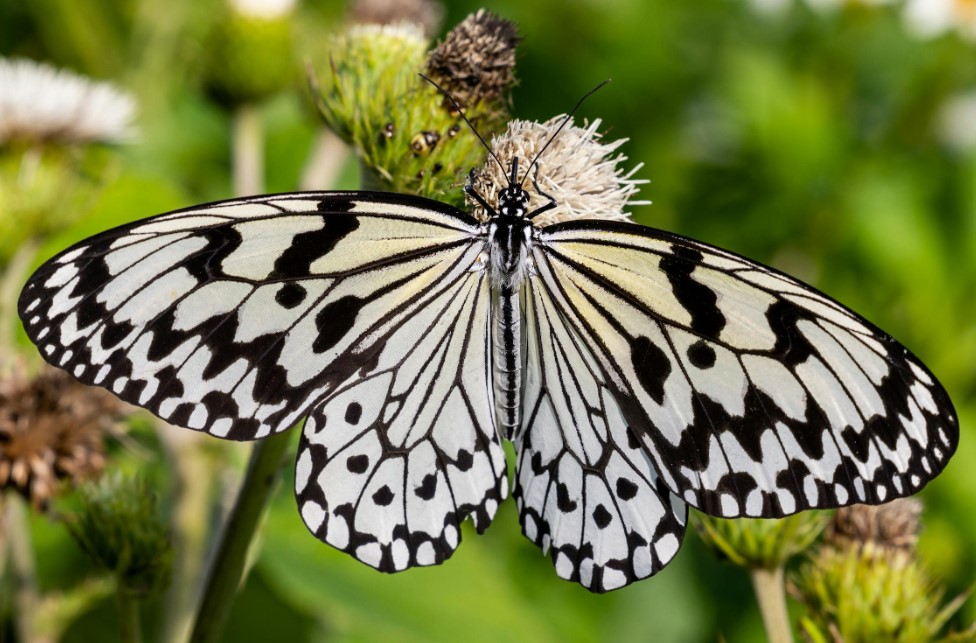In the vibrant landscapes of Kenya, a recent natural phenomenon has captured the collective imagination: swarms of white butterflies, known as Belenois aurota, gracefully dancing across the skies. This event, far from being a cause for concern, serves as a poignant reminder of the intricate balance of our ecosystems and the subtle yet profound ways in which climate change and sustainability intersect within these natural systems.
The white butterflies, also known as the Pioneer White or African Caper White in Africa, have been observed migrating in large numbers, a spectacle that has sparked a mix of awe and apprehension among locals. Some speculated that their appearance might foretell significant weather shifts, possibly indicating impending droughts or heralding periods of heavy rainfall. However, Dr. Muo Kasina, Chairman of the Association of Kenyan Entomologists, has offered reassurances that these butterflies are harmless, neither destructive to crops nor indicative of climatic extremities such as drought.
Read also: Simply put, producers and consumers need to embrace sustainability
This migration pattern underscores a broader narrative about the resilience and adaptability of nature in the face of changing environmental conditions. The lifecycle of the Belenois aurota, from egg to larva to pupa and finally to butterfly, spans just three to six weeks, reflecting a rapid response to favorable weather conditions. Such adaptability is emblematic of the broader ecological processes that sustain biodiversity and ensure the resilience of ecosystems against the backdrop of climate variability.
The phenomenon also highlights the importance of biodiversity in maintaining ecological balance. Butterflies, with their role in pollination, serve as a keystone species in many ecosystems, contributing to the health and sustainability of plant life, which in turn supports a wide array of animal species. Their migration and breeding patterns are closely tied to climate conditions, making them sensitive indicators of environmental change.
In the context of climate change, the predictable patterns of wildlife behavior are shifting. The migration of the Belenois aurota across Kenya could be interpreted as a response to these changes, signaling alterations in habitat conditions, availability of food resources, and the timing of seasonal cycles. Such phenomena, while natural, underscore the urgency of addressing climate change to preserve the delicate balance of ecosystems upon which human and non-human life depends.
Sustainability, in this light, is not merely a concept but a critical framework for action that seeks to harmonize human activities with the natural world. It involves adopting practices that ensure the long-term viability of our planet’s ecosystems, from reducing carbon emissions to protecting natural habitats and biodiversity. The migration of white butterflies in Kenya serves as a reminder of the beauty and complexity of these ecosystems, highlighting the need for conservation efforts that respect and preserve nature’s rhythms.
Related article: NEMA’s directive and extended producer responsibility
Moreover, the response to the butterfly migration underscores the importance of scientific literacy and understanding in dispelling myths and fostering a more informed and respectful relationship with nature. Dr. Kasina’s clarification that the butterflies are neither harmful nor a bad omen is a testament to the role that knowledge plays in guiding public perceptions and interactions with wildlife.
The way forward requires a concerted effort to integrate sustainability into every aspect of our lives, from the way we manage agricultural practices to how we design our cities and economies. It calls for a shift in perspective, recognizing that human well-being is intrinsically linked to the health of the environment. This entails not only protecting species like the Belenois aurota but also addressing the root causes of climate change and environmental degradation.
So, the dance of the white butterflies across the Kenyan skies is more than a natural spectacle; it is a narrative about resilience, adaptation, and the interconnectedness of all life. It serves as a call to action for sustainability, urging us to safeguard the delicate balance of our ecosystems for future generations. In doing so, we not only preserve the beauty and diversity of our planet but also ensure the survival and flourishing of humanity within this web of life. The challenge of climate change is immense, but so is the opportunity for innovation, collaboration, and renewal in our journey toward a sustainable future.





